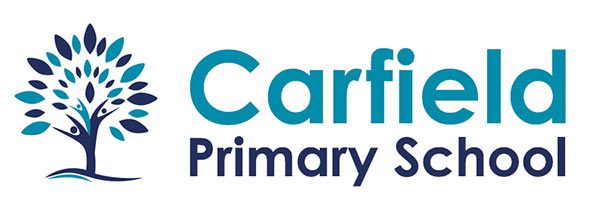Art
Our Vision…
At Carfield, we aim for our pupils to be able to express themselves creatively through art, craft and design. We want pupils to be able to have an appreciation of the work of significant, well-known historical and local artists and use their techniques and designs when planning and designing their own pieces. We also want pupils to be inspired by influential artists who use modern day art and design to reflect their culture, background and beliefs. Pupils will be able to explore ideas, plan designs, create and evaluate their artwork, all whilst making experimental, purposeful and critical choices along the way.

Intent
By the time pupils leave school at the end of KS2, we want them to be masters of various art and design techniques by being given progressive opportunities to develop their art and design skills throughout school. Starting in Early Years Foundation Stage (EYFS), pupils will be taught to use a range of materials for different purposes and make informed choices about materials to use for products. Pupils will begin to develop their understanding of colours: how they mix and how they can show emotions, as well as textures and patterns and how these can represented around the world in different cultures. Pupils will develop their knowledge of line, shape and form and as they move into Key Stage 2. As pupil’s knowledge of art builds, they will be able to talk about the work or historical and local artists and talk about the history of art often reflects the culture and society at that time. They will be able to name artists or designers which they have used to influence their work.
Implementation
- Art is taught throughout school from EYFS – Y6. In KS1 and KS2, art is taught 3 times a year in half termly blocks.
- The art curriculum is a progressive curriculum covering 5 main art and design areas: Painting and Drawing, 3D Form, Sculpture, Craft and Design and Collage.
- Each art unit has a medium term plan consisting of 6 lessons. Each lesson introduces art knowledge and develops new art and design skills.
- Pupils have the opportunity to draw upon previously taught skills, as well as develop new art and design skills.
- Within each key stage, pupils will draw upon the works of significant artists and develop their art history. Key artists within the curriculum are: Henry Matisse, Pete McKee (local artist), William Morris, Van Gough, Lowry and Kara Walker.
- Pupils have the opportunity to use different art mediums for painting and drawing: pencil, acrylic paint, oil pastels, watercolours and charcoal.
- Pupils will develop their use of materials for sculpture from junk modelling, to papier mache, to clay, to wire modelling.
- Pupils will manipulate different materials and use different techniques to create 3D form: weaving, mosaics, tie dye and light boxes.
- In KS1, pupils will learn how to mix colours and the difference between primary and secondary colours.
- In KS2, pupils will develop sketch books which showcase their development of art skills and techniques.
- Pupils are encouraged to experiment, explore, plan, design, create and evaluate their artwork, referring back to plans and design briefs and seeing if they outcome fits the audience and purpose it was intended for.
- Pupils with additional needs are included in whole class lessons and teachers provide scaffolding or support where necessary. For those pupils who are working outside of the year group, individual learning activities are provided to ensure their progress in art is still maintained.
Impact
- Pupils talk positively about art and design: they show an understanding of art history by being able to talk about significant artists and the techniques they have learnt from them.
- Pupils understand art has various different forms, from painting and drawing, to sculpture, to collage.
- Pupils know how to plan a piece of artwork, and they can draw on inspiration from other artists when designing it, and they can evaluate it’s success based on audience and purpose.
